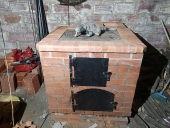



Jay Angler wrote:At Nina's request:
1-2 chicken livers and hearts chopped finely
Maybe we need to ask Burra for her recipe? See how different they are?





 However, I can make a good argument based on physics for why tadpole is better:
However, I can make a good argument based on physics for why tadpole is better:


paul wheaton wrote:The "long life incandescent" died today. Day 3705. It had a total "on" time of 17,784 hours.
The LED is still going.

Jay Angler wrote:Austen Shackles wrote:
That's a total of 12 signals on that one junction, and all of them have 1 light illuminated 24/7* for an ongoing consumption of 72KWh per day, or 26,280KWh per year for just ONE road junction.
The technology already exists for vehicle activated lights. I wonder if that technology used to only light up the signal light when there are cars approaching from that direction, would use more or less power?
Maybe not in big cities with traffic round the clock, but in many smaller communities or housing development areas, I suspect you could manage a net gain. We appear to have already done that with some of our people lighting for paths in my area. The people paths are also making more of an effort to keep the light pointed downward to minimize light pollution.
I truly wish we would do more publicity about the damage of light pollution to all living creatures, including humans, and work on reducing it. One downside I have observed about the supposedly 'cheap' LED's is the proliferation of outdoor lighting when none is really required.

